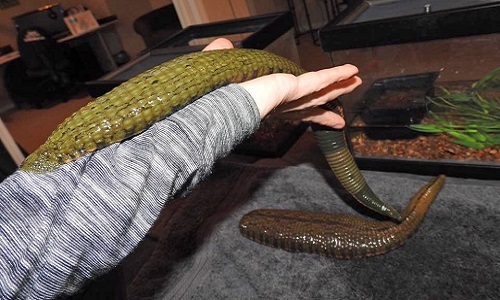An American therapist keeps huge herds of buffalo leeches in the room and lets them suck blood once a month to improve their health.
Therapist Ariane Khomjani keeps four Asian buffalo leeches (Hirudinaria manillensis) in her room in Walnut Creeky, California, USA. Khomjani explains that each leech has a personality, some are adventurous while others are more shy. “Some are greedier than their peers. When they are full, they just lie down and rest,” Khomjani said.
“When leeches suck blood, you usually don’t feel anything, even with large buffalo leeches, although the bite is a bit painful at first,” says Khomjani. After each meal, leeches can last up to a year. However, experts do not recommend that leeches suck blood without consulting a doctor. Many people are allergic to the saliva of leeches and are at risk of becoming infected with this parasite.
According to Khomjani, most bites heal without leaving scars, but because leeches have a blood thinner in their saliva, it sometimes takes several days to stop the bleeding. Cultivation of leeches for healing began about 3000 years ago. In Victorian times, doctors encouraged the use of leeches to treat everything from headaches to hysteria. Hirudo medicalis leech fever has caused the numbers of these species to drop rapidly on the Eurasian continent. Today, the Hirudo medicalis leech is a protected species. Some hospitals still use them to treat blood clots in patients.
There are more than 600 species of leeches in the world and the majority suck their blood. Some like worm leeches (Pharyngobdellida) are predators that eat invertebrates, some species of leeches that eat humus or organic debris. Leeches have 8 pairs of unique eyes to detect shadows of potential prey. Their brain is made up of 32 nodes located along the vertebrae. Leeches are hermaphrodites, each with male and female sex organs, but they always need a partner to fertilize.
If a hungry leech detects body temperature or CO2 in a human breath, it can crawl closer to the target with its mouth and suction. When they find a suitable host, they secrete anesthesia and blood thinners and bite the victim with a jagged jaw.


